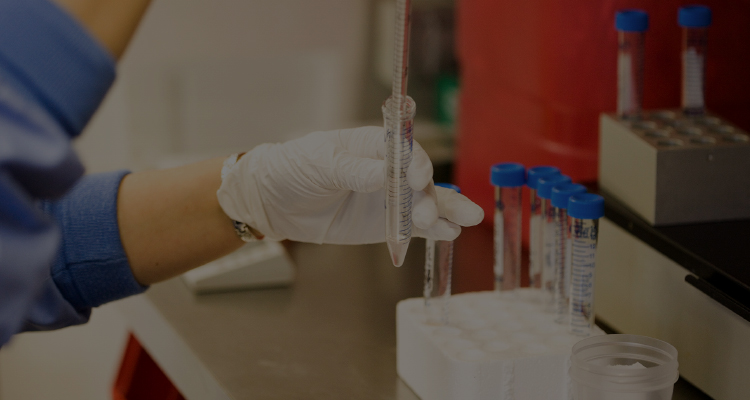주요연혁 / 연구실적
연구활동 제65차 대한생식의학회 추계학술발표
페이지 정보
제65차 대한생식의학회 추계학술발표
GM-CSF가 수정란 질 (Quality) 향상에 미치는 영향
(Effect ofthe granulocyte macrophage colonystimulating factor on human embryo quality during an IVF cycle)
GM-CSF (Granulocyte Macrophage Colony-Stimulating Factor)는 배아에 있어 발달, 착상과 수정란 질(Quality) 향상에 중요한 역할 인자 중 하나이다. 실험 동물로써 GM-CSF Knock-out 마우스 모델에서는 수정란의 세포수가 현저하게 떨어지는 현상을 관찰할 수 있고, 또한 수정란 배양시 GM-CSF와 함께 첨가했을 경우 수정란의 형태 및 발달률 증가를 시킨다는 보고가 있었다.
따라서 본 연구실에서는 IVF cycle 조건하에서 GM-CSF가 수정란의 발달에 미치는 영향을 관찰해 보았으며, GM-CSF를 첨가하여 배양한 그룹에서 유의적으로 높게 양질의 수정란이 생산되었음을 확인 할 수 있었다.
본 연구는 11월 30일 서울대학교병원 임상 1,2 강의실에서 열린 제 65차 대한생식의학회 추계학술대회에 발표 되었으며, 임신률 향상을 위해 양질의 수정란 생산을 위한 연구 보고되었다.
Effect ofthe granulocyte macrophage colonystimulating factor on human embryo quality during an IVF cycle
Choi, E.G.1, Cheon, H.S.1, Rho, Y.H.2, Oh, D.S.2, Jang, W.H.2 and Lee, S.C.2
1Department of Clinical Laboratory, Saewha Hospital, Busan, Korea South.
2The Centre for Reproductive Medicine and Infertility, Saewha Hospital, Busan, Korea South.
Introduction: Diverse growth factors are produced in the human reproductive tract, including the granulocyte macrophage colony-stimulating factor (GM-CSF) that plays an important role in embryo growth, implantation, and increasing blastocyst cell count and inner cell mass. In a knockout mouse model, a reduced blastocyst cell count was reported. In a human embryo culture medium, the addition of the GM-CSF positively impacted blastocyst formation, hatching rate, and attachment stages of development. A recent report indicated that embryo culture with GM-CSF increased the live birth rate in specific patients with a miscarriage history. In this study, we investigated the effects of the addition of GM-CSF in human embryo culture. First, we obtained embryos from a patient during an IVF cycle and divided them into 2 groups. The embryos were cultured with or without GM-CSF, respectively.
Materials and Methods: The culture medium used in this study was the G-Series (G-IVF, G-1, and G2, Vitrolife), which was supported with a serum protein substitute (Sage). When the number of oocytes collected from the same patient exceeded 15, they were used in the present study and divided into 2 groups after confirming the pronucleus. One group was treated with the 2ng/mL GM-CSF (Sigma) during in vitro culture. Briefly, approximately 18–20 hours after insemination (conventional IVF or ICSI), the treatment and control groups were transferred into a microdrop of the G1 culture medium, and a morphological grade of D-3 was obtained for the embryo (approximately 1–3, grade 1 being the best morphological grade; stage-specific, even-sized blastomeres without multinucleation and with fragmentation < 10%) before the embryo was transferred to a G2 medium. The culture was incubated at 37°C in 6% CO2 and with paraffin oil. Cross-checking of the morphological grade of the blastocyst was performed, according to previously described standards (Gardner et al. 1999), by 3 senior embryologists with more than 10 years’ experience. The mean results were compared using a t test (P < 0.05).
Result: The total number of mature oocytes obtained was 281 from 11 patients (mean age, 32.9 ± 2.9 years) with a miscarriage history during a previous IVF cycle, and 108 and 114 fertilized oocytes were cultured with GM-CSF and in general G1 medium, respectively. A cleavage rate (mean ± SD) of 79.4% ± 15.9% was obtained. All the patients in this study did not undergo fresh embryo transfer, and a total of 91 (8.3 ± 2.8) blastocytes were cryopreserved. The blastocyte development rates in both groups were not significantly different. By morphological assessment, the high-quality appearance ratios of the D-3 embryos were similar between the GM-CSF and control groups. However, in the blastocyte stage, the high-quality blastocyte rate was significantly higher in the GM-CSF group than in the control group (27.6% ± 15.7% vs. 13.2% ± 8.4%).
Conclusions: In this study, Assessment of embryo quality was limited at embryo development and morphological classification but we have confirmed that GM-CSF particularly effects blastocyte quality.Although we did not perform any implantation procedure, we suggest that pregnancy and live birth rates may be improved with high-quality blastocytes, which is supported by a previous study indicating that the use of a GM-CSF medium in patients with a miscarriage history increased the live birth rate.






















